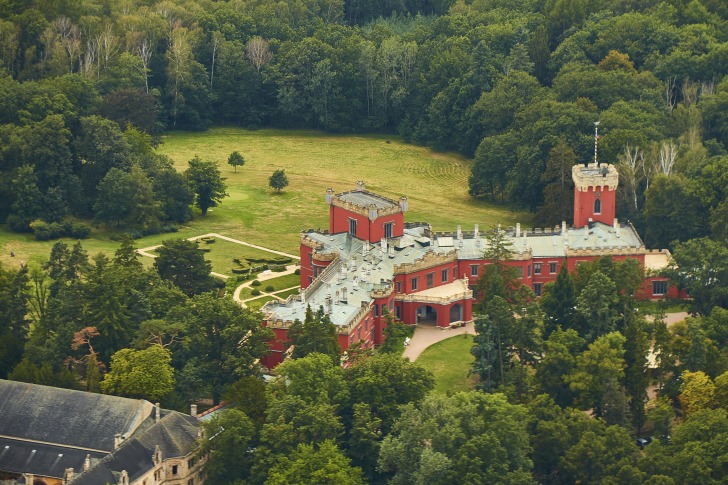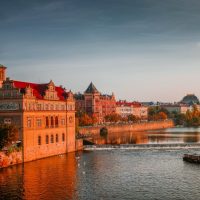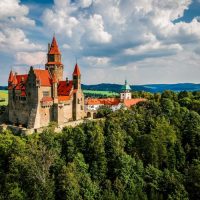The Czech Republic should be on everyone’s bucket list.
This central European country is at the center of a five-country cluster.
Once called Bohemia, this small country is surrounded by Germany, Poland, Slovakia, and Austria.
Its capital city, Prague, boasts extraordinary architecture, an ancient history, and a vibrant culture.
The 10.7 million Czech people are known for their beauty and resilience.
According to The Global Peace Index, this United Nations member ranks 10th in global safety.
But whether visiting for the cuisine or touring the royal castle ruins, Czechia, while safe for travel, is not without criminal activity.
And the national crime rate is 25% or 36 offenses per 1,000 residents.
Contents
10 Most Dangerous Cities in the Czech Republic
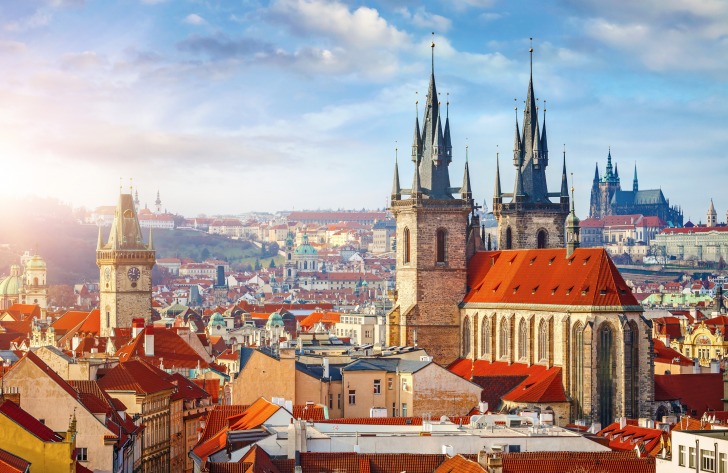
1. Prague
The cosmopolitan Prague is one of Europe’s glittering gems and a must-see for most world travelers.
Wolfgang Amadeus Mozart’s ancestral home has grown to over 1.3 million.
A cultural icon, this 8th-century city was also the birthplace of Antonín Dvořák.
After touring the Astronomical Clock and strolling along Charles Bridge, try dinner at a local cafe serving Czech Duck and Knedliky.
Prague remains one of Europe’s safest – reporting five offenses per 1,000 people.
But within the fair city, the charming Old Town district of Bartolomějská is a hub of tourist activity and the most dangerous place in Prague.
The area ranks highest on Prague’s crime index, with 3,179 offenses annually, including car thefts, muggings, and drug issues.
Other dangerous suburbs to avoid in the city include Malá Strana, Holešovice, and the gritty and dilapidated train station of Smíchov.
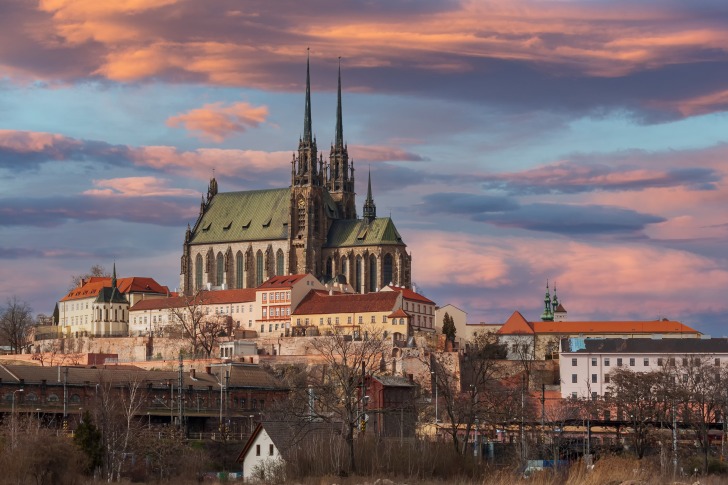
2. Brno
Brno ranks second by size. Its iconic Špilberk Castle is the city’s largest museum, and the spires of St. Peter and Paul Cathedral rise high above the city.
Inside the church are baroque altars offset by a Madonna and Child statue, an icon for worshipers.
Last year, according to CzechCrime.org, there were 123 crimes in Brno, primarily petty theft and vandalism.
For a population of 380,000, this translates into a less than 6% crime rate – although a few violent crimes went unsolved.
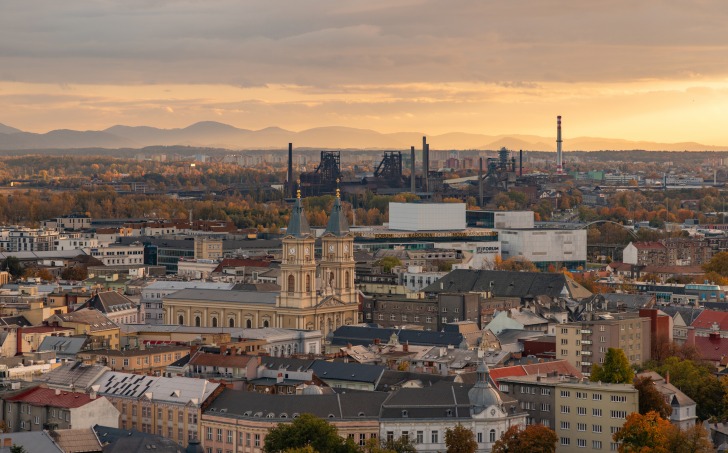
3. Ostrava
Ostrava sits seven miles from the Polish border at the meeting of four rivers: the Oder, Opava, Ostravice, and Lučina.
For many who visit, it is home to Dolni Vitkovice Square, the Davork Theatre, and one of the best European musical festivals, Colors of Ostrava.
With such beautiful surroundings, the hard-working population of roughly 302,000 are fiercely proud of their northeastern town.
Coal and mining are part of this overlooked city’s heritage, and their influence can be seen in the buildings and steel works.
But with all there is to see and do, Ostrava is not without its criminal element.
On average, there are 380 crimes annually with a rate of 11.5% – burglary, petty theft, assault, and moral crimes top the list.
And drugs are prevalent in this small town.
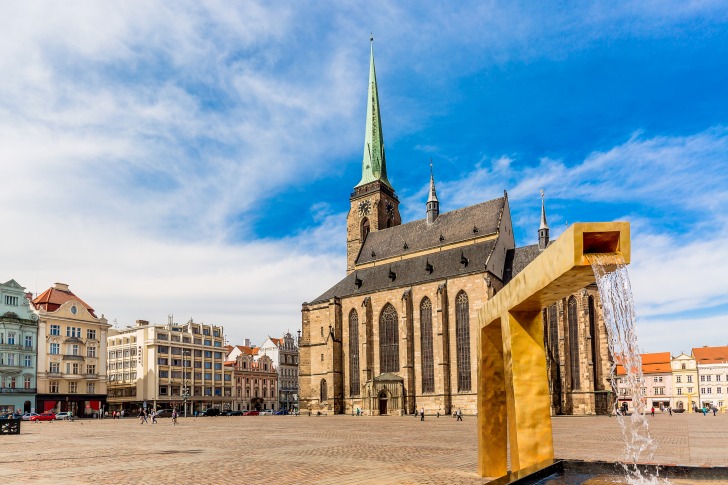
4. Plzeň
Founded in the 10th century, Plzen was part of the trade route from Prague to Bavaria.
Currently home to 175,000 Plzeners, the western town of Plzeň or Pilsen is home to the 19th-century Pilsner Urquell Brewery – responsible for the classic Pilsner beer style and the Great Synagogue.
It is also home to the Football Club Viktoria Plzeň Stadium.
A strong community, unfortunately, there is also a criminal element in Plzeň.
Burglary, theft, public intoxication, and vandalism make up the majority of offenses – 245 annually, with a rate of 13.2%.
During game days, the crowded stadium, like the central square, is a popular target for pickpockets and petty thieves.
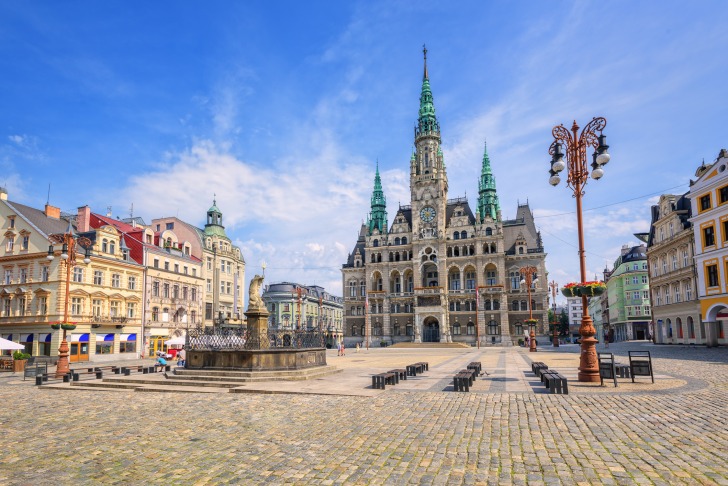
5. Liberec
Leberc, also known as the Bohemian Manchester, sits on the Lusatian Neisse River, protected on all sides by mountains.
It has been a significant textile manufacturing hub since the 16th century.
And medieval Flemish tapestries hang in the North Bohemian Museum.
Day and night, Liberec’s central square is moderately safe, although solo travelers will encounter some harassment.
Over 210 offenses are committed annually – translating to a general crime rate of 13.5% – relatively high for a population of 102,000.
Burglary and petty theft overshadow all violations.
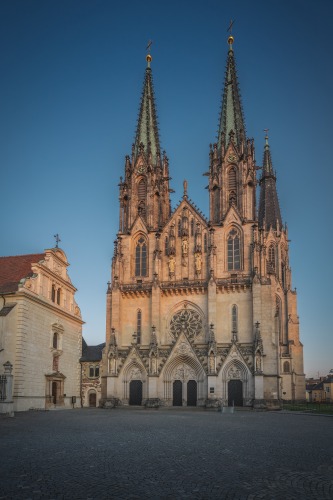
6. Olomouc
Olomouc, a 2.5-hour train ride from Prague, is part of Morvia’s western province.
Famous for its fountains and fantastic architecture, the most notable are Triton Fountain and Caesar’s Fountain.
The 18th-century Holy Trinity Column in the square is a unique example of the Olomouc Baroque style.
The 100,000 people of Olomouc are proud of their UNESCO World Heritage site.
The Czech Republic’s 6th largest city is not a criminal haven, but things happen, so keep your eyes open when walking in that narrow alley between buildings.
Olomouc averages 210 offenses annually, giving it a 9% crime rate. Surprisingly, violent assaults and burglary top the list.
But theft, especially at opportune times, exists.
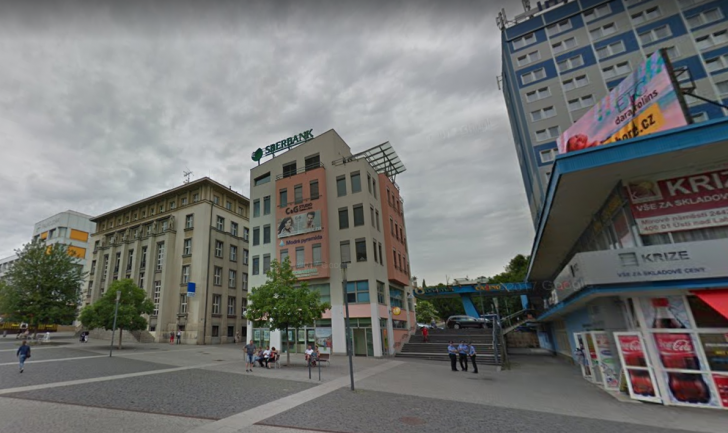
7. Ústí nad Labem
Usti nad Labem is a vital industrial port between Dresden and Prague built on the banks of the Elbe River.
Usti nad Labem is a national transportation hub of the Central Bohemian Highlands.
This small town is relatively safe for solo travelers and adventurers.
There are several registered taxi services, and the tram system runs throughout the day.
The Usti nad Labem Zoo or Hrad Strekov Castle are incredible sights to see during the day, but walking alone at night is not recommended.
There were 168 offenses reported last year, offset by the smaller population of 94,000; that’s a 13% crime rate.
Deceptively high for this work-oriented town.
Most offenses center around drug possession, corruption, and petty theft.
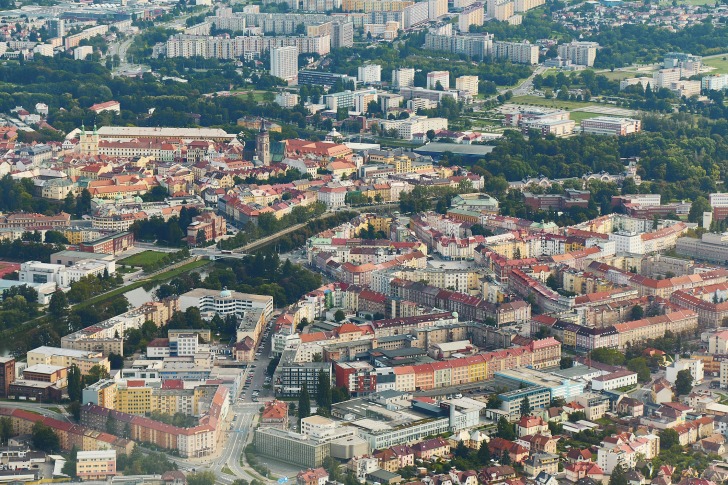
8. Hradec Králové
Hradec Kralove saw its first settlement in 1225 AD as part of the Polish empire.
Today, this beautiful city is a protected urban zone and home to roughly 90,000.
And it is considered one of the least dangerous cities in the Czech Republic.
Often overlooked by tourists, the streets of Hradec Kralove combine baroque spires and Romanesque architecture with medieval castles.
The East Bohemian Museum and the Gallery of Modern Art in Hradec Kralove celebrate its unique history.
Despite the peace and beauty, there are a few rough elements and areas.
Tourists are always told to watch their belongings, but most criminal activity in this historically protected town is away from landmarks and monuments.
The people of Hradec Kralove last reported 135 offenses, an 8.3% crime rate – including burglary, petty theft, and vandalism.
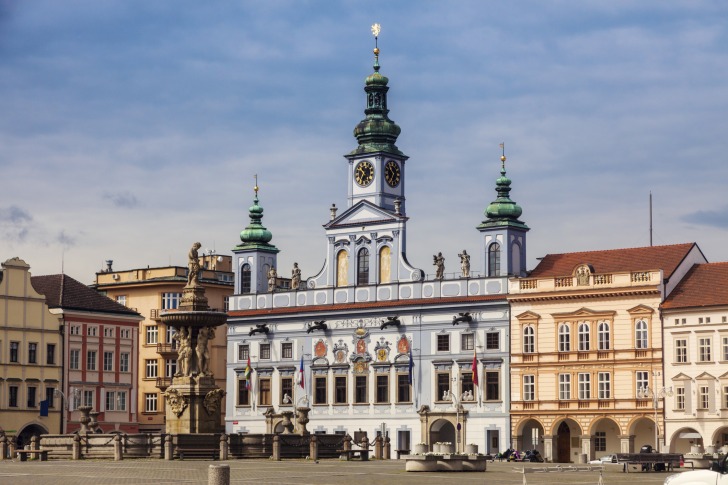
9. České Budějovice
The capital of South Bohemia near the Austrian border between Prague and Linz, České Budějovice, sits on the Malse River.
Decidedly Baroque, the grand Přemysl Otakar II Square is central to town and daily life.
The Black Tower, built in the Gothic-Renaissance style, overlooks the Klet’ Mountains. Samson’s Fountain and the three-spired Town Hall are also part of the square.
České Budějovice’s crime rate hovers around 10%.
For a population of 93,100, this is roughly 186 reported offenses annually.
Moral crimes, theft, and vandalism are the highest ranked.
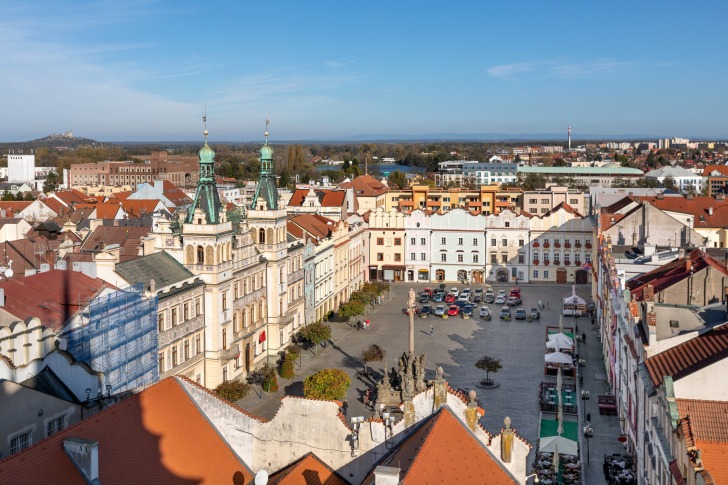
10. Pardubice
This north-central city sits south of Hradec Králové, equidistant between Prague and the wast and Ostrava to the east.
It is nestled between the Elbe and Chrudimka Rivers.
Its monuments and landmarks are lawfully protected as an urban monument site.
Theft and vandalism lead the list of 110 annual offenses in Pardubice.
A minimal 6.6% crime rate for over 93,000 makes this one of the least dangerous cities in Bohemia.
However, tourists are always a target, and crime in Pardubice is no different.
5 Safety Tips for Traveling to the Czech Republic
Wherever you travel, certain precautions ensure safety.
- Keep track of all belongings. Train stations, cafes, sports stadiums, and markets are known for thieves looking for easy targets.
- Carry your identification: While the Czech Republic is an open country and part of the European Union, foreigners should carry identification. Carry a copy of your passport or ID and secure the original in the hotel safe.
- Prepare for emergencies. The emergency number for police in the Czech Republic is 158, and for ambulance and fire services, dial 155. Jot down your embassy information, hotel, and personal details, just in case.
- Use recognized transportation. Only do business with licensed taxis or ride shares such as Uber. Public transit is safe with a bit of situational awareness. Avoid getting into unmarked taxis or riding with strangers.
- Learn a few Czech phrases. Even one or two expressions can be helpful in an emergency or when asking for directions or ordering food. Translations apps are also beneficial.
Czech Republic Safety Overview
READ THE FULL REPORT: Czech Republic Safety Review
Safety Index:
- OVERALL RISK: LOW
- TRANSPORT & TAXIS RISK: LOW
- PICKPOCKETS RISK: LOW
- NATURAL DISASTERS RISK: LOW
- MUGGING RISK: LOW
- TERRORISM RISK: LOW
- SCAMS RISK: LOW
- WOMEN TRAVELERS RISK: LOW
Frequently Asked Questions
Is the Czech Republic Safe for Solo Travel?
The Czech Republic is very safe for solo and female travelers.
Its people are warm and hospitable.
But, there are areas to avoid at night.
And general precautions are always a good practice.
What Currency Is Used in the Czech Republic?
The Czech Republic, a European Union member, prefers its historic Czech Koruna (CZK) or Czech crown to the Euro.
The 100, 200, and 500 CZK are widely circulated; however, the Koruna also has larger notes of 1000, 2000, and 5000 CZK.
What Language is Spoken in the Czech Republic?
Czech is Bohemia’s national language.
However, visitors will hear Polish, German, Hungarian, Russian, and English throughout the country.
Is tipping customary in the Czech Republic?
Not only is tipping in the Czech Republic typical, but expected.
The average tip ranges from nothing to 10%.
Still, foreign visitors are expected to tip more, at least 10%, for satisfactory service and a bit more if the service is outstanding.
Tipping is assumed in upscale restaurants and bars in larger cities.
But don’t forget to count your change.
